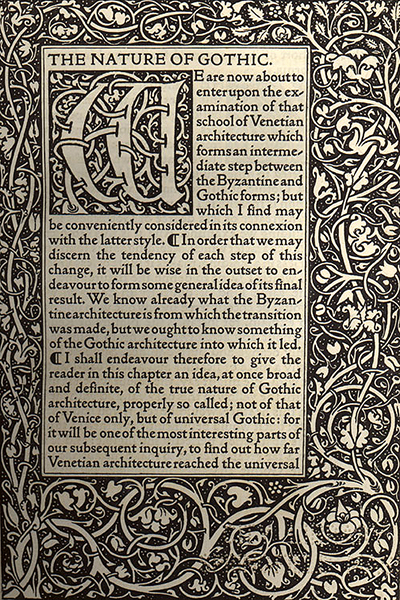William Morris (1834-1896) was a well-known figure in the Victorian era. During his lifetime he was known as a poet and a social activist. After he died, he became famous for his textiles and designs. He was eventually respected as a key figure in the British Arts and Crafts movement.
During the early 20th century, he heavily influenced many modernist writers, especially with his works of fantasy (which were some of the earliest in the English language).
An Early Foray Into Poetry
Morris started out his literary career when he was a university student at 24 years of age. He published a volume of poetry in 1858 called The Defence of Guenevere and Other Poems. This was a series of dark poems that were set in the medieval era and emphasised the violence and tragedy of the time. However, the works were not well received by critics of the time and he was discouraged from publishing more fiction for a fair number of years. This is also why Morris focussed more on his design and architectural work. A well-known poem from this collection is The Haystack in the Floods, which is the story of the ill-fated Jehane and Robert, lovers sharing a last parting before the Hundred Years War tears their lives apart.
Translator of Ancient and Medieval Languages
While Morris took a step back from his poetry, he continued his literary work by translating ancient Greek and Old Norse works into English. In 1887 he translated The Odyssey for London, Reeves & Turner. As a former student of Classics while he studied at Oxford University, he was well-versed in the ancient languages such as Greek and Latin, which were so important to an understanding of the medieval era. But perhaps his greatest contribution to the study of the medieval period was his translation of some of the Icelandic sagas.
During the intermediate years of his literary career, he made friends with and learned Old Norse from Eiríkr Magnússon, who was a professor of Icelandic at Cambridge. As a result of this friendship, Morris was able to travel extensively to Iceland. He translated The Saga of Gunnlaug Worm-Tongue, Grettis Saga and The Story of the Volsungs and Niblungs to the English language. His translations are still widely used in medieval studies departments around the world.
A Prolific and Highly Influential Novelist
Morris was also a prolific novelist, who, especially with his fantasy works, heavily influenced writers of the early 20th century. He is most well-known for his imaginative fiction series of works such as The Wood Beyond the World and The Well at the World's End. He also wrote The Story of the Glittering Plain, The Water of the Wondrous Isles and his last work, published by his family after his death, The Sundering Flood. These works were set in fantasy worlds that he created entirely out of his own imagination. He is also responsible for an early work of dystopian fiction called News From Nowhere.
The Connections between Morris, Narnia and Middle-Earth
Morris heavily influenced writers such as CS Lewis and JRR Tolkien. The parallels between the world of Narnia and the location of the story in The Wood Beyond the End of the World have been noted by a number of scholars. Likewise, Tolkien mentioned a number of times in his correspondences and essays that he was influenced by Morris. Tolkien attempted to retell one of the most famous stories from the Finnish book of mythology, The Kalevala, in the style of The House of the Wolfings (Morris, 1889). Furthermore, the names Gandolf and Silverfax both appear in The Well at the World's End (close enough to Gandalf and Shadowfax to draw similarities).
It can be said that Morris contributed mainly to the fantasy genre in the English language by skilfully recreating a kind of modern (read: contemporary Victorian) medieval romance, but set in a world apart from the historical context that he grew up in. Later on, Tolkien would go on to explain that he had created Middle Earth as a kind of English mythology and thus once again this idea can be attributed back to Morris, who was also doing something very similar. Morris wanted to create a kind of mythology that English people could relate to, but not necessarily be attached to in the sense of the political implications that might come from reinterpreting stories that are directly related to history and historical figures.




 William Morris.jpg)
